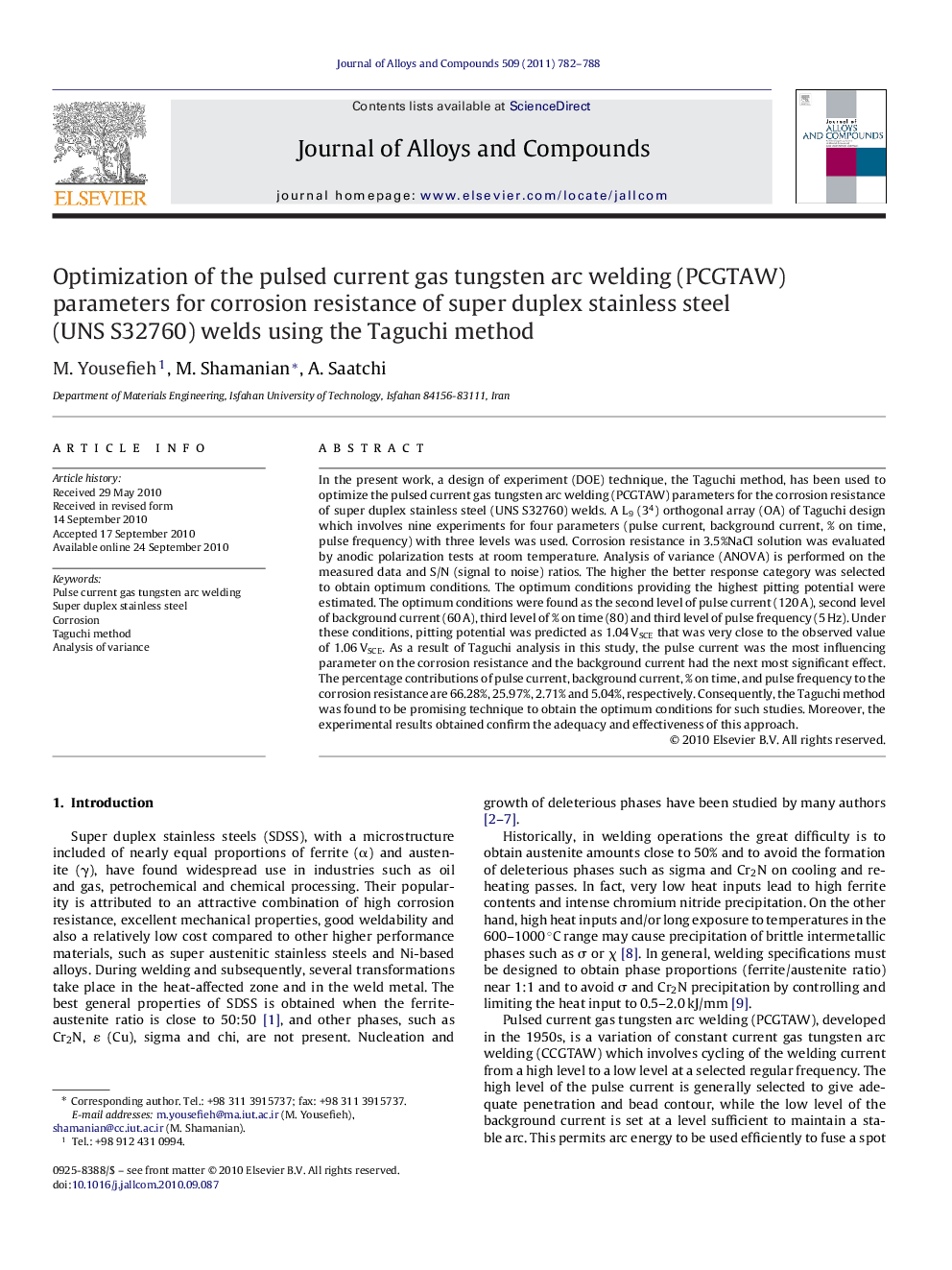| کد مقاله | کد نشریه | سال انتشار | مقاله انگلیسی | نسخه تمام متن |
|---|---|---|---|---|
| 1618823 | 1005712 | 2011 | 7 صفحه PDF | دانلود رایگان |

In the present work, a design of experiment (DOE) technique, the Taguchi method, has been used to optimize the pulsed current gas tungsten arc welding (PCGTAW) parameters for the corrosion resistance of super duplex stainless steel (UNS S32760) welds. A L9 (34) orthogonal array (OA) of Taguchi design which involves nine experiments for four parameters (pulse current, background current, % on time, pulse frequency) with three levels was used. Corrosion resistance in 3.5%NaCl solution was evaluated by anodic polarization tests at room temperature. Analysis of variance (ANOVA) is performed on the measured data and S/N (signal to noise) ratios. The higher the better response category was selected to obtain optimum conditions. The optimum conditions providing the highest pitting potential were estimated. The optimum conditions were found as the second level of pulse current (120 A), second level of background current (60 A), third level of % on time (80) and third level of pulse frequency (5 Hz). Under these conditions, pitting potential was predicted as 1.04 VSCE that was very close to the observed value of 1.06 VSCE. As a result of Taguchi analysis in this study, the pulse current was the most influencing parameter on the corrosion resistance and the background current had the next most significant effect. The percentage contributions of pulse current, background current, % on time, and pulse frequency to the corrosion resistance are 66.28%, 25.97%, 2.71% and 5.04%, respectively. Consequently, the Taguchi method was found to be promising technique to obtain the optimum conditions for such studies. Moreover, the experimental results obtained confirm the adequacy and effectiveness of this approach.
Research highlights▶ Among the four factors and three levels tested, it was concluded that the pulse current had the most significant effect on the pitting potential and the background current had the next most significant effect. The effects of pulse frequency and % on time are less important when compared to the other factors. ▶ The percentage contributions of the pulse current, the background current, % on time, and pulse frequency to the corrosion resistance are 66.28%, 25.97%, 2.71% and 5.04%, respectively. ▶ The optimum conditions within the selected parameter values were found as the second level of pulse current (120 A), second level of background current (60 A), third level of % on time (80%) and third level of pulse frequency (5 Hz). ▶ The confirmation test was carried out at optimum working conditions. Pitting potential was increased to 1.06 VSCE by setting the control factors. Predicted (1.04 VSCE) and observed (1.06 VSCE) pitting potential values are close to each other, which are the highest values obtained in the present study.
Journal: Journal of Alloys and Compounds - Volume 509, Issue 3, 21 January 2011, Pages 782–788